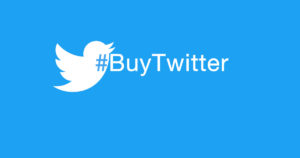A new Twitter tool developed by Greenpeace Germany is giving online protests some legs.
The tool displays users’ tweets on a large LED screen, and when held in front of high-profile areas and corporations, draws public interest and media attention.
Benjamin Borgerding, who works in Greenpeace Germany’s web communications, says while the team developed the tool in 2009, its most recent Twitter protest targeting Shell has been its most successful campaign yet.
Planting the screen on top of a large trailer at one of the most prominent Shell gas stations in Hamburg, Greenpeace Germany and other Greenpeace offices rallied their networks to share their messages with Shell.
More than 6,000 tweets aired during the first day, making #stopshell the No. 1 Twitter trending topic and #savethearctic No. 2.
To further enhance and prolong the campaign, Greenpeace Germany built an interactive microsite designed with a Save the Arctic theme. The site is still up and running, and users who tweet can view their message shared by a character walking down a highway (with the odd polar bear strolling by) while an empty Shell station looks on.
With the help of other Greenpeace offices, the site was translated into four languages: English, German, French and Italian, and has collected 56,000 messages.
The combined activities for the Save the Artic campaign generated major media buzz, including 12 newspaper articles, and two T.V. magazine mentions.
While Shell didn’t respond to the attention, Benjamin says the protest’s main goal was to gain significant press coverage, while creating new and innovative ways to fuse online and offline mobilisation.
“We thought it was a great way to engage people on the streets and online,” he says. “It helped us spread the word, which was the main goal.”
The most recent Save the Arctic Twitter protest builds on three other successful Twitter demonstrations by Greenpeace Germany including a display at the 2009 Copenhagen Climate Change Conference, a demo in front of Nestlé headquarters in Frankfurt as part of the Kit Kat campaign, and as part of a Greenpeace action for renewable energy in 2011.

An earlier Twitter protest held outside of Nestlé in 2010.
Lessons Learned:
From these campaigns, Greenpeace Germany says the Twitter tool is best used sparingly when a campaign is looking to engage media on an important topic. It’s also important to promote the campaign among your network in advance in order for it to spread as widely as possible.
For example, before launching the Shell Twitter protest, Greenpeace Germany invited other offices and its network to join the campaign, and collected more than 100 tweets in advance.
As Twitter isn’t as widely used in Germany, a team of volunteers took to the streets asking people to write short messages to Shell, which they tweeted from the Greenpeace Twitter account.
Adding new design tools and features, like the Shell microsite in tandem with the video screen demonstration, also helps keep the events fresh, which is more likely to engage people and the press as the tool becomes more popular.

Volunteers collecting messages to Shell, which were tweeted from the Greenpeace account.
If other organizations would like to use the tool for their campaigns, Greenpeace Germany, which developed the tool with a web company, is happy to share its learnings.
Stay connected: @greenpeace_de
Related posts:
ArcticReady Integrates Online & Offline Actions to Amplify a Week of Action Against Shell
How Greenpeace France got 13,000 to thank nuclear activists online and offline (VIDEO)
Do you have an innovation in mobilisation and people-powered campaigns? Share it with Mob Lab by contacting moblab@greenpeace.org.
Categories:
tech, tools and tactics



